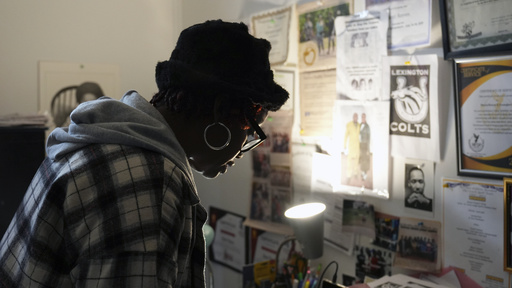LEXINGTON, Miss. (AP) — A winter sun is setting over the brown, patchy field where Ronald Redmond’s kids have been playing football since they were 5. The goalposts are rusting and the fence is ripped. But Redmond knows what kids who played on this field have gone on to achieve: high school stardom, college scholarships and even NFL glory.
“Stay on that football field,” Redmond recalls telling his 11-year-old son, R.J., a center and linebacker on the Lexington Colts youth football team. “You can go somewhere with that. … If you dedicate yourself to this football and your education, then you can go wherever you want.”
Tackle football is among the only recreational activities available to kids in Lexington and surrounding Holmes County, the second-poorest county in thenation’s poorest state. “The opportunity for kids is at a bare minimum,” Redmond said.
Parents have good reason to believe in what football offers. According to an analysis by The Shirley Povich Center for Sports Journalism and the Howard Center for Investigative Journalism at the University of Maryland, three players on 2023 Power Five college football rosters were from Lexington, where the population is 1,154.
Put another way: One out of every 385 people from this majority-Black town in central Mississippi played for an elite college program. It’s the best per capita rate of any town with at least 250 people in the state — and among the top rates in the nation.
In Lexington, youth tackle football at minimum is a structured activity that teaches discipline and keeps kids out of trouble. At best, it’s a path to college, a chance at a better life and a way out.
“Football is a highlight of this community,” said Paul Reeves, whose family oversees the Lexington Colts, “because for a lot of us, that’s all we have.”
Last year, the Colts enrolled nearly 40 kids between the ages of 5 and 12. The program has also organized clothing drives and food programs for the county, where the median household income is less than $29,000 a year.
“We want to give hope to the kids in our area,” said Reeves, the Colts’ defensive coordinator. “Their talent can get wasted if they get involved with the wrong type of activities.”
In a town where 76% of residents are African American, every child who played last season for the Colts was Black. Only two white children have signed up in the program’s 25 years.
“There’s really very little intermingling socially among the kids that are Black and white in this community,” said Sherri Reeves, widow of the pastor who founded the Colts in 1999.“And we got firsthand of that.”
It’s not just football. There are signs of a racial divide throughout Lexington, where a Confederate monument looms over the town square, the police department is under federal investigation for civil rights violations and the schools are segregated.
Parents are drawn to the Colts in part because they hear about the program’s success stories — people like Corey Ellington, a former Colt who is now a safety at Mississippi State University. Or D.J. Montgomery, an NFL wide receiver. Or Terrance Hibbler, one of the top high school players in the state.
Hibbler received at least 18 college scholarship offers before deciding he would join Ellington next season at Mississippi State in Starkville, about 100 miles from home.
The possibilities are what convinced Redmond to enroll his sons in youth football.
“I just paid attention to that,” he said. “I learned that the earlier they get into it, the better they’ll be on the field. So I just couldn’t wait for the opportunity to present itself.”
Marcus Rogers, the head football coach at Holmes County Central High School in Lexington, estimates that in six seasons, 60 of his players have earned scholarships to colleges across the country. Even legendary former University of Alabama coach Nick Saban made a handful of recruiting trips to Lexington.
For people in Holmes County, Rogers added, football “gives them something to be positive about. It gives them something to brag about.”
Local colleges, including Jackson State University, Mississippi State University and Holmes Community College, offer academic scholarships to high school students who achieve minimum ACT scores. But according to the Mississippi Department of Education, just 20% of students at Holmes County Central met ACT benchmarks last year for college and career readiness, compared to 49% statewide.
“Whether you’ve got sports or not, it’s a challenge for kids leaving places like Holmes County, moving into life because there’s so many things they have to overcome,” said Rep. Bryant Clark, who represents Holmes County in the Mississippi legislature.
“Football and sports afford them opportunities to be able to go to college (and) get a free education,” Clark said. “And whether they go further out after college in football is one thing, but the sky’s the limit as far as being able to get out of college, have a degree and be able to be a productive citizen.”
___
Sapna Bansil reported for the Shirley Povich Center for Sports Journalism and the Howard Center for Investigative Journalism in the Philip Merrill College of Journalism at the University of Maryland.


